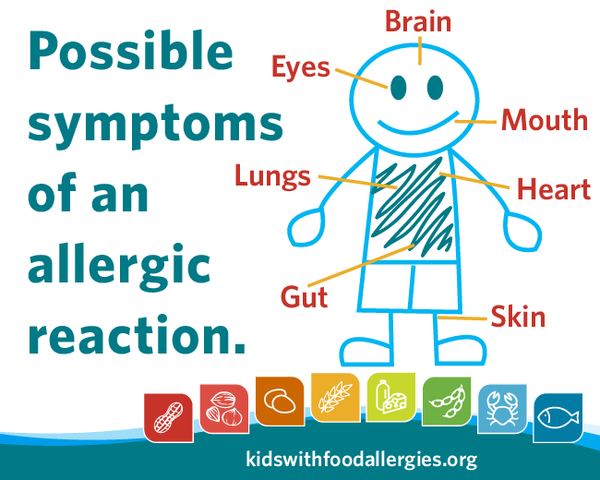The end of the year is a good time for a reminder about how to recognize and treat a serious allergic reaction called anaphylaxis (anna-fih-LACK-sis).
The symptoms of anaphylaxis may occur shortly after having contact with an allergen and can get worse quickly. You can’t predict how your child will react to a certain allergen from one time to the next. Both the types of symptoms and how serious they are can change. Anaphylaxis must be treated right away because it can cause death.
Symptoms of anaphylaxis usually involve more than one part of the body such as the skin, mouth, eyes, lungs, heart, gut, and brain. Some symptoms include:
- Skin rashes and itching and hives
- Swelling of the lips, tongue or throat
- Shortness of breath, trouble breathing, wheezing (whistling sound during breathing)
- Dizziness and/or fainting
- Stomach pain, vomiting or diarrhea
- Feeling like something awful is about to happen
- Your child’s doctor will give you a complete list of symptoms.
Know How to Treat Anaphylaxis
- Follow the steps in your child's emergency care plan to give your child epinephrine right away. This can save your child's life. You cannot rely on antihistamines to treat anaphylaxis.
- After giving epinephrine, always call 911 or a local ambulance service. Tell them that your child is having a serious allergic reaction and may need more epinephrine.
- Your child needs to be taken to a hospital by ambulance. Medical staff will watch your child closely for further reactions and treat him or her if needed.
Epinephrine is the medicine used to treat anaphylaxis. Epinephrine is safe and comes in an easy-to-use device called an auto-injector. When you press it against your child’s outer thigh, it injects a single dose of medicine. Your child’s health care team will show you how to use it. You, in turn, can teach people who spend time with your child how to use it. Take advantage of holiday breaks to review the symptoms of anaphylaxis and how to use your epinephrine auto-injectors.
Remember to carry your epinephrine auto-injectors with you, everywhere you go!
Helpful Resources:
Everything you need to know about epinephrine
What to do if you can't afford epinephrine


Comments (6)